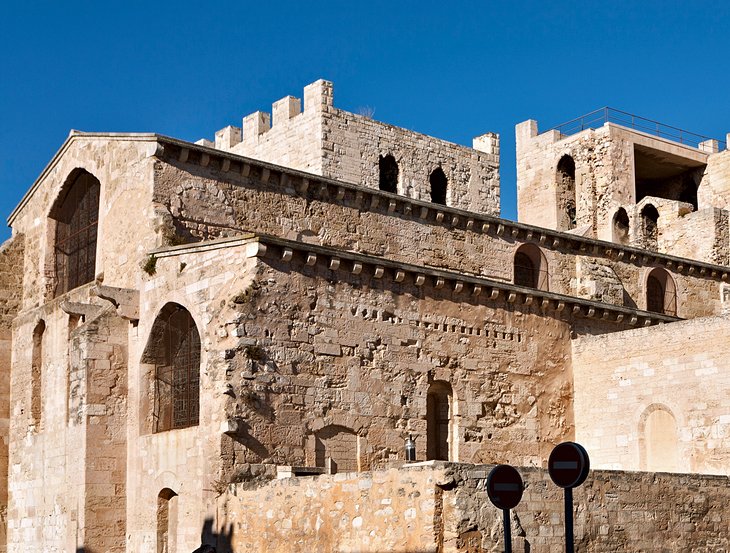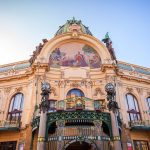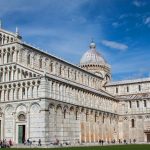
Marseille tourist attractions
Marseille, a port city in southern France, has been a crossroads of immigration and trade since its founding by the Greeks circa 600 B.C. At its heart is the Vieux-Port (Old Port), where fishmongers sell their catch along the boat-lined quay. Basilique Notre-Dame-de-la-Garde is a Romanesque-Byzantine church. Modern landmarks include Le Corbusier’s influential Cité Radieuse complex and Zaha Hadid’s CMA CGM Tower.
Marseille is the second most populous city in France, with 870,321 inhabitants in 2020 (Jan. census) over a municipal territory of 241 km2 (93 sq mi). Together with its suburbs and exurbs, the Marseille metropolitan area, which extends over 3,972 km2 (1,534 sq mi), had a population of 1,879,601 at the Jan. 2020 census, the third most populated in France after those of Paris and Lyon. The cities of Marseille, Aix-en-Provence, and 90 suburban municipalities have formed since 2016 the Aix-Marseille-Provence Metropolis, an indirectly elected metropolitan authority now in charge of wider metropolitan issues, with a population of 1,903,173 at the Jan. 2020 census.
Founded c. 600 BC by Greek settlers from Phocaea, Marseille is the oldest city in France, as well as one of Europe’s oldest continuously inhabited settlements. It was known to the ancient Greeks as Massalia (Greek: Μασσαλία, romanized: Massalía) and to Romans as Massilia. The name Massalia probably derives from μᾶζα (mass, lump, barley-cake), the “lump” being the La Garde rock. Marseille has been a trading port since ancient times. In particular, it experienced a considerable commercial boom during the colonial period and especially during the 19th century, becoming a prosperous industrial and trading city. Nowadays the Old Port still lies at the heart of the city, where the manufacture of Marseille soap began some six centuries ago. Overlooking the port is the Basilica of Notre-Dame-de-la-Garde or “Bonne-mère” for the people of Marseille, a Romano-Byzantine church and the symbol of the city. Inherited from this past, the Grand Port Maritime de Marseille (GPMM) and the maritime economy are major poles of regional and national activity and Marseille remains the first French port, the second Mediterranean port and the fifth European port. Since its origins, Marseille’s openness to the Mediterranean Sea has made it a cosmopolitan city marked by cultural and economic exchanges with Southern Europe, the Middle East, North Africa and Asia. In Europe, the city has the third largest Jewish community after London and Paris.
1.Basilique Notre-Dame de la Garde

La basilique Notre-Dame de la Garde ou plus simplement Notre-Dame-de-la-Garde, souvent surnommée « la Bonne Mère » (en provençal Nòstra Dòna de la Gàrdia/Nouesto-Damo de la Gardi), est une basilique mineure de l’Église catholique datée du XIXe siècle. Emblème de Marseille, dédiée à Notre-Dame de la Garde (protectrice de Marseille avec saint Victor), elle domine la ville et la mer Méditerranée depuis le sommet de la colline Notre-Dame-de-la-Garde (site classé depuis 19171).
Elle se situe à cheval sur les quartiers du Roucas-Blanc et de Vauban, sur un piton calcaire de 149 m d’altitude surélevé de 13 m grâce aux murs et soubassements d’un ancien fort. Construite par l’architecte protestant Henri-Jacques Espérandieu dans le style romano-byzantin et consacrée le 5 juin 1864, elle remplace une chapelle du même nom édifiée en 1214 et reconstruite au XVe siècle. Bâtie sur les bases d’un fort du XVIe siècle construit par François Ier en 1536 pour résister au siège de Charles Quint, la basilique comporte deux parties : une église basse, ou crypte, creusée dans le roc et de style roman, et au-dessus une église haute de style romano-byzantin décorée de mosaïques. Au sommet d’un clocher carré de 41 mètres de haut surmonté lui-même d’une tourelle de 12,5 mètres qui lui sert de piédestal, se dresse une statue monumentale de 11,2 mètres de la Vierge à l’Enfant réalisée en cuivre doré à la feuille.
Perched on a hilltop above the harbor, this spectacular church is the most important landmark in Marseille. The site was used in ancient times as an observation point, and during the Middle Ages, was the location of a pilgrimage chapel.
Today, the Basilique Notre-Dame de la Garde is a beacon for the faithful, with an enormous gilded Madonna crowning the belfry. Built between 1853 and 1897, the church features an opulent Neo-Byzantine interior of light and dark marble arches supporting gilded mosaic cupolas. The lavish design has a mesmerizing effect.
After seeing the interior, visitors can spend time on the outdoor terrace that offers breathtaking views. The panoramas extend from the red-tile rooftops of Marseille’s buildings to the Vieux Port (historic harbor), all the way to the Frioul Islands in the Mediterranean Sea.
2.Abbaye Saint-Victor

The Abbey of Saint-Victor is a former abbey that was founded during the late Roman period in Marseille in the south of France, named after the local soldier saint and martyr, Victor of Marseilles.
History
The crypts of the abbey contains artefacts indicating the presence of a quarry that was active during the Greek period and later became a necropolis from 2 BC onward until Christian times.
In 415, Christian monk and theologian John Cassian, having come from the monasteries of Egypt, founded two monasteries at Marseille— the Abbey of Saint Victor for men in the south of the Vieux-Port, as well as the Abbey of Saint Sauveur the other for women in the south of Place de Lenche. The Abbey of Saint Victor was later affected during the fifth century by the Semipelagian heresy, which began with some of Cassian’s writings.Both monasteries suffered from invasions by the Vikings and Saracens, and were destroyed in 838 by a Saracen fleet, when the then-abbess Saint Eusebia was also martyred with 39 nuns. In 923, the Abbey of Saint-Victor was destroyed again by the Saracens.
A short walk from the Vieux Port, the Abbaye Saint-Victor is another must-see tourist sight with splendid harbor views.
The Abbaye Saint-Victor was founded in the 5th century and incorporates the original basilica, which makes it one of the oldest buildings in Marseille that is still intact. The basilica, along with its crypt, is considered a gem of Early Christian architecture and art.
Most of the abbey was rebuilt in the 12th and 13th centuries during the Romanesque era. With its crenellated walls and towers, the foreboding exterior has the feel of a medieval fortress.
3.Explore the Vieux Port

The Old Port of Marseille (French: Vieux-Port de Marseille, [vjøpɔʁ də maʁsɛj]) is at the end of the Canebière, the major street of Marseille. It has been the natural harbour of the city since antiquity and is now the main popular place in Marseille. It became mainly pedestrian in 2013.
The Vieux Port represents the birthplace of Marseille. This is where the city began as a Greek port around 600 BCE. Surrounded by serene blue waters, the Old Port is located in the west of Marseille near La Canebière boulevard.
A stroll around this bustling harbor immerses visitors in the sights and sounds of a thriving Mediterranean port. The waterfront is a focal point for tourists, and many say it’s one of the best places to visit in Marseille for authentic local cuisine. Seafood restaurants specialize in bouillabaisse, the flavorful seafood stew that is the city’s signature dish.
On the east side of the harbor, the Quai des Belges hosts a fish market every morning. Once an important commercial port, the Vieux Port is now used primarily by fishing boats and sports craft.
4.Enjoy Nature Walks and Scenic Boat Tours at Calanques National Park

Calanques National Park (French: Parc national des Calanques) is a French national park located on the Mediterranean coast in Bouches-du-Rhône, Southern France. It was established in 2012 and extends over 520 km2 (201 sq mi), of which 85 km2 (33 sq mi) is land, while the remaining is marine area. It includes parts of the Massif des Calanques stretching between Marseille’s southern arrondissements, Cassis and La Ciotat.Some of the park’s best known features include the Calanque de Sormiou, Calanque de Morgiou, Calanque de Port-Miou, Calanque de Sugiton, Calanque d’en Vau and Cosquer Cave.
Between Marseille and the quaint fishing village of Cassis is the Parc National des Calanques, a splendid nature site where the Mediterranean meets the Massif des Calanques mountain range.
The landscape is distinguished by majestic limestone rock walls with fjord-like coves (“calanque” translates to “cove”) filled with pools of saltwater in mesmerizing turquoise hues.
Outdoor sports enthusiasts will find many things to do at Calanques National Park, such as swimming, kayaking, rock climbing, and hiking. An excellent system of trails allows visitors to appreciate the pristine landscape and gorgeous coastal views.
5.Château d’If

The Château d’If (French pronunciation: [ʃɑto dif]) is a fortress located on the Île d’If, the smallest island in the Frioul archipelago, situated about 1.5 kilometres (7⁄8 mile) offshore from Marseille in southeastern France. Built in the 16th century, it later served as a prison until the end of the 19th century. The fortress was demilitarized and opened to the public in 1890. It is famous for being one of the settings of Alexandre Dumas’s adventure novel The Count of Monte Cristo. It is one of the most visited sites in the city of Marseille (nearly 100,000 visitors per year).
A short ferry ride away from the Vieux Port of Marseille, the Château d’If is located on the Île d’If in the Frioul Islands archipelago, a nature conservation area that includes the tiny islands of If, Pomègues, Ratonneau, and Tiboulen.
The spectacular scenery features protected coves, turquoise waters, pristine beaches, sandy creeks, and impressive limestone cliffs. Thanks to the Mediterranean sunshine, the light creates a serene shimmering effect on the water, and a microclimate allows rare floral species to thrive here.
6.Musée d’Histoire de Marseille

Le musée d’Histoire de Marseille est un musée consacré à l’histoire de la ville de Marseille. Fondé en 1983, il a été entièrement rénové et a rouvert le 14 septembre 2013 à l’occasion de Marseille-Provence 2013.
Installé dans le Centre Bourse, à proximité du Vieux-Port, le musée d’histoire de Marseille abrite le site du Port antique, une exposition permanente de 3 500 m2, un espace d’exposition temporaire, un centre de documentation et un auditorium2, ce qui en fait le plus important musée d’histoire urbaine en France
In Le Panier quarter, just a few steps away from the Vieux Port, the Musée d’Histoire de Marseille tells the story of Marseille from its Gallo-Greek origins through the Middle Ages to the present day. The museum offers an impressive collection of artifacts, covering 2,600 years of history.
The historical evolution of France’s oldest city comes to life in this sleek modern museum’s bright spacious rooms. The collections contain 4,000 items and hundreds of multimedia exhibits.
7.La Vieille Charité

La Vieille Charité is a former almshouse, now functioning as a museum and cultural centre, situated in the heart of the old Panier quarter of Marseille in the south of France. Constructed between 1671, and 1749, in the Baroque style to the designs of the architect Pierre Puget, it comprises four ranges of arcaded galleries in three storeys surrounding a space with a central chapel surmounted by an ovoid dome.
The chapel and the hospice were classified as a historic monument by order of January 29, 1951.
La Vieille Charité is located on the Place des Moulins that lies at the highest point in Le Panier.
The building was created in 1640 when the Town Council of Marseille decided to give impoverished residents decent accommodations, in compliance with a royal policy of “enclosing the poor.”
In 1749, a three-floor public hospital with four wings was added to the building. There is a chapel at the center courtyard of the hospital complex. Built from 1679 to 1707, the chapel is a wonderful example of Italian Baroque architecture.









